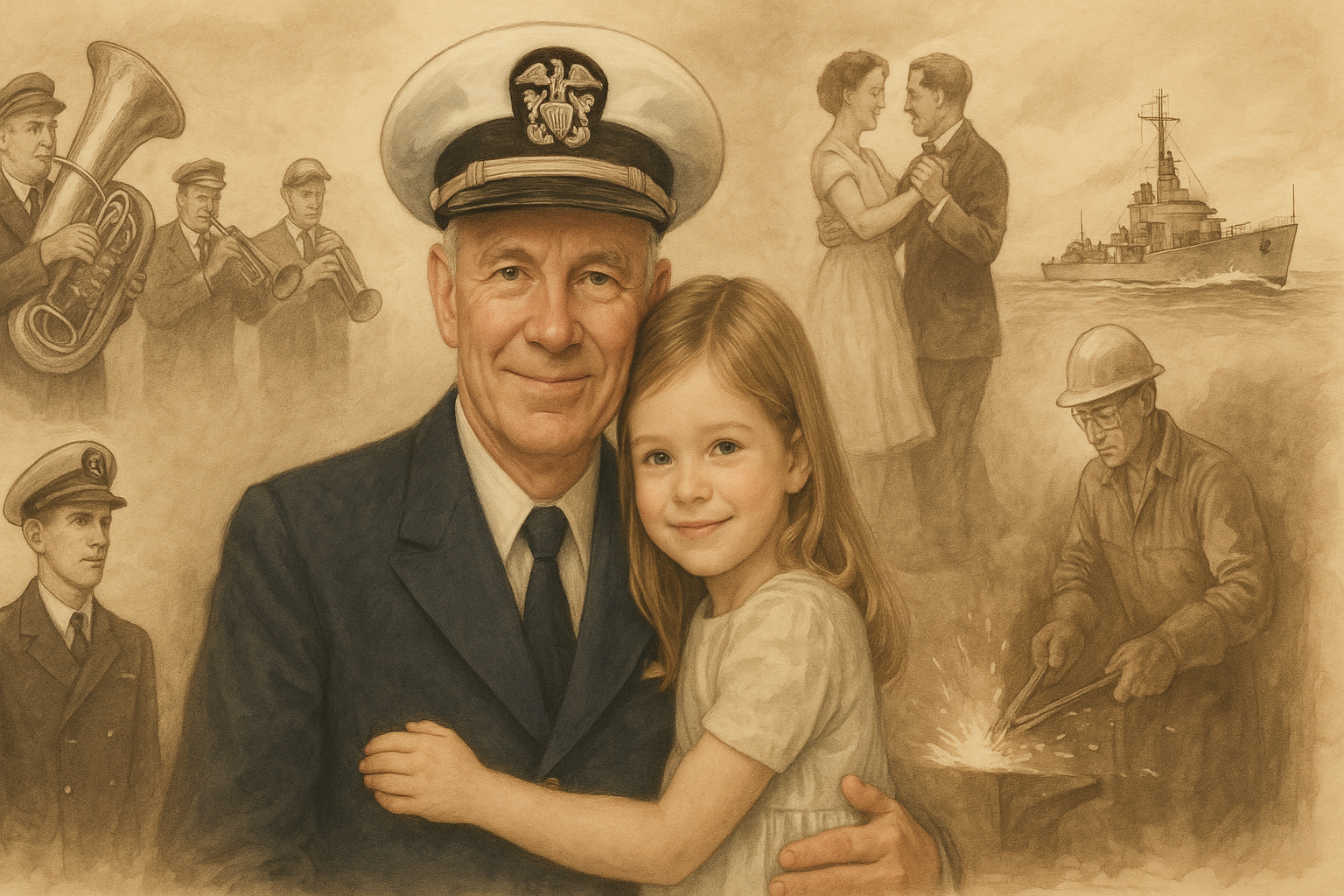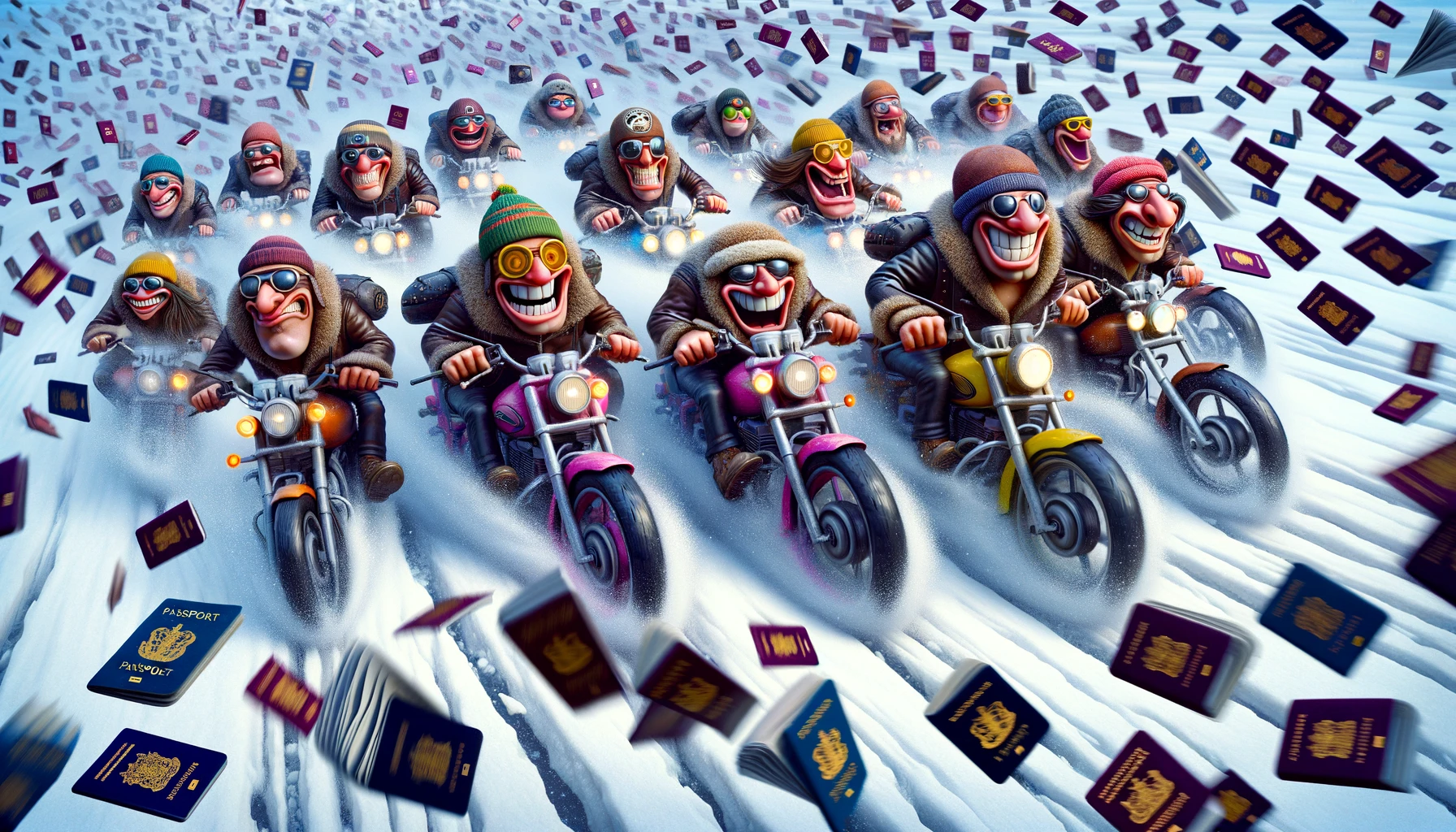THAT WAS HARRY
written by jaron summers (c) 2015
He came home one afternoon when the family was living in Easton, Pennsylvania and said casually, “I’ve got a job as a mining engineer in Chile. We’ll be going there for three years. Pack up everything. We leave Friday.”
That offhand remark—Harry was nothing if not understated—marked the beginning of an adventure of a lifetime for him, his wife Betty, and their two daughters, Diane, nine, and Kate, seven.
The year was 1957. And when Harry said “pack up everything,” he meant exactly that. The four Dahlbergs had to gather everything they’d need for the next three years—except food. That part would be figured out in Chile. Sadly for Harry, this meant saying goodbye to peanut butter, one of his favorite snacks. (It was a loss he never fully recovered from.)
After a whirlwind shopping spree, the family boarded a slow boat to South America—a six-week voyage through rough and ominous seas. Diane and Harry had iron stomachs. Betty and Kate? Not so much.
Halfway through the journey, Betty was washing her face in their tiny cabin when her upper dentures slipped and broke in the stainless steel sink.
Mortified, she refused to leave the cabin.
When other passengers asked why his wife wasn’t coming up on deck, Harry replied, straight-faced, “I had to beat her. She’s black and blue.” The girls found this outrageous fib hilarious. They knew their dad was joking. That was Harry.
Over the years, the Dahlbergs moved often, usually to isolated destinations. The girls became fluent in Spanish and often acted as interpreters for their parents—essentially running the family’s diplomatic corps by age ten.
The longest they ever stayed in one place was three years. Their homes varied from cement slabs with cold water and rough walls to modest shacks in the jungle. No matter the conditions, Harry and Betty always made sure their house—whatever it was—felt like home.
Because they lived in such remote areas, the family came to rely more on one another than on any outside community. Their bond became their anchor.
Eventually, when Harry was around sixty, after careers in teaching, foundry work, and engineering, he and Betty settled in Queen Valley, Arizona. Here, Harry set out to build his dream house.
Unlike the adobe homes surrounding it, Harry’s home would be made of redwood. Why? Because Queen Valley was unincorporated, and building codes were for sissies.
With help from Betty, Kate, and a few friendly neighbors, Harry finished construction. It was the only redwood building in town—and soon everyone knew why. Each spring, swarms of woodpeckers descended like feathered Vikings and began eating Harry’s house.
Turns out, woodpeckers love redwood. Also turns out, they were a protected species. No harm could come to them.
Harry fought back with a BB gun. But over the years, the woodpeckers won. That was Harry.
About ten years ago, he and Betty moved to Southern California to be closer to their daughters—Kate in Los Angeles, and Diane in San Francisco.
Of all the men I’ve ever met, Harry was one of the most gentle. The only things that ever truly mattered to him were Betty and the girls.
In his youth, Harry and his brother started a band. Harry played the tuba and arranged music. He soon found himself playing with big bands, including Guy Lombardo, Wayne King, and Tommy Dorsey.
He belonged to what Tom Brokaw called The Greatest Generation. During World War II, Harry served as an officer on a destroyer escort. He traveled to ports from London to Istanbul to Honolulu.
He didn’t like the idea of killing, and fortunately, never had to. But he was proud to serve. Until the very end, he wore a destroyer escort cap.
At just twenty-four, he commanded men twice his age. According to his captain, he led by example. Most of his paychecks went home to Betty, who was raising their two little girls.
Harry was friendly, kind to a fault, and deeply interested in others. But he never had many close friends. He didn’t need them. His wife and daughters were his world. That was Harry.
He loved bridge and taught Betty to play. He didn’t care much whether he won or lost. He actually seemed happier when others won.
His wildest stunt? At a football game where drinking was forbidden, he filled a hot water bottle with booze, rigged it with a rubber syringe, and discretely poured drinks into cups. Everyone thought it was just hot tea. That was Harry.
He smoked like a chimney—three to four packs a day—for decades. At age seventy, he decided he was short of breath and quit cold turkey. He told everyone he’d start again when he turned eighty.
At eighty, he said, “Maybe I’ll wait another ten years.” That was Harry.
In his later years, tobacco finally caught up with him. He had a pacemaker, emphysema, and needed heart surgery. Doctors said it could buy him more time.
Harry said no. He wanted no “heroic measures.” When it was time, he wanted to die at home, surrounded by those he loved.
Three or four months before he passed, he told Betty and the girls he was worn out. A few weeks later, he said he didn’t have the strength to keep going.
Still, for the last ten years of his life, every single morning—no matter how he felt—he would say: “It’s a great day to be alive.”
The day after Thanksgiving 2004, Harry died. He wasn’t afraid. He was at peace, surrounded by his beloved family, and in no pain.
In his entire life, it’s hard to think of anyone Harry ever deliberately hurt—except, maybe, the time he teased Betty about beating her after she broke her dentures on the high seas.



